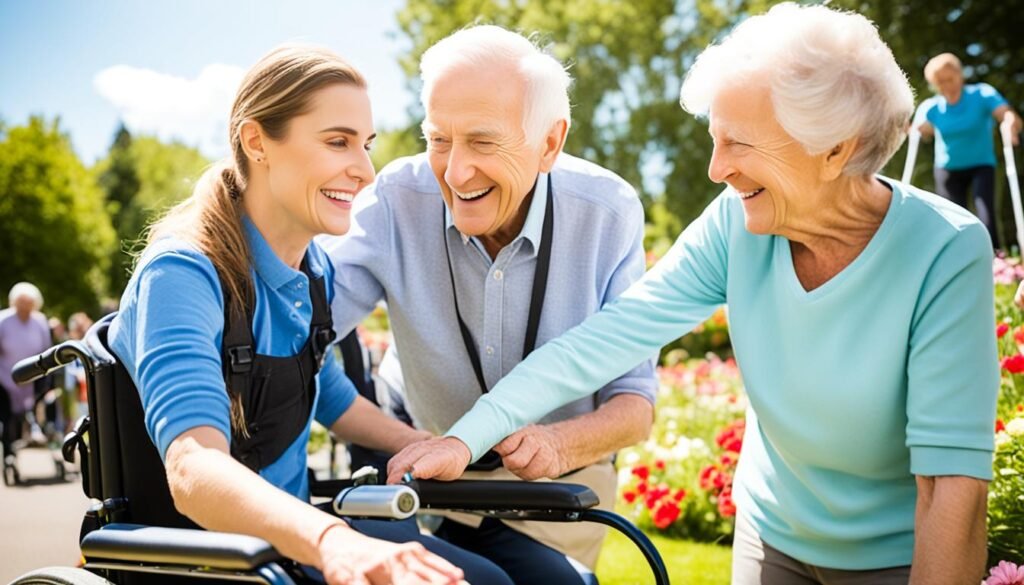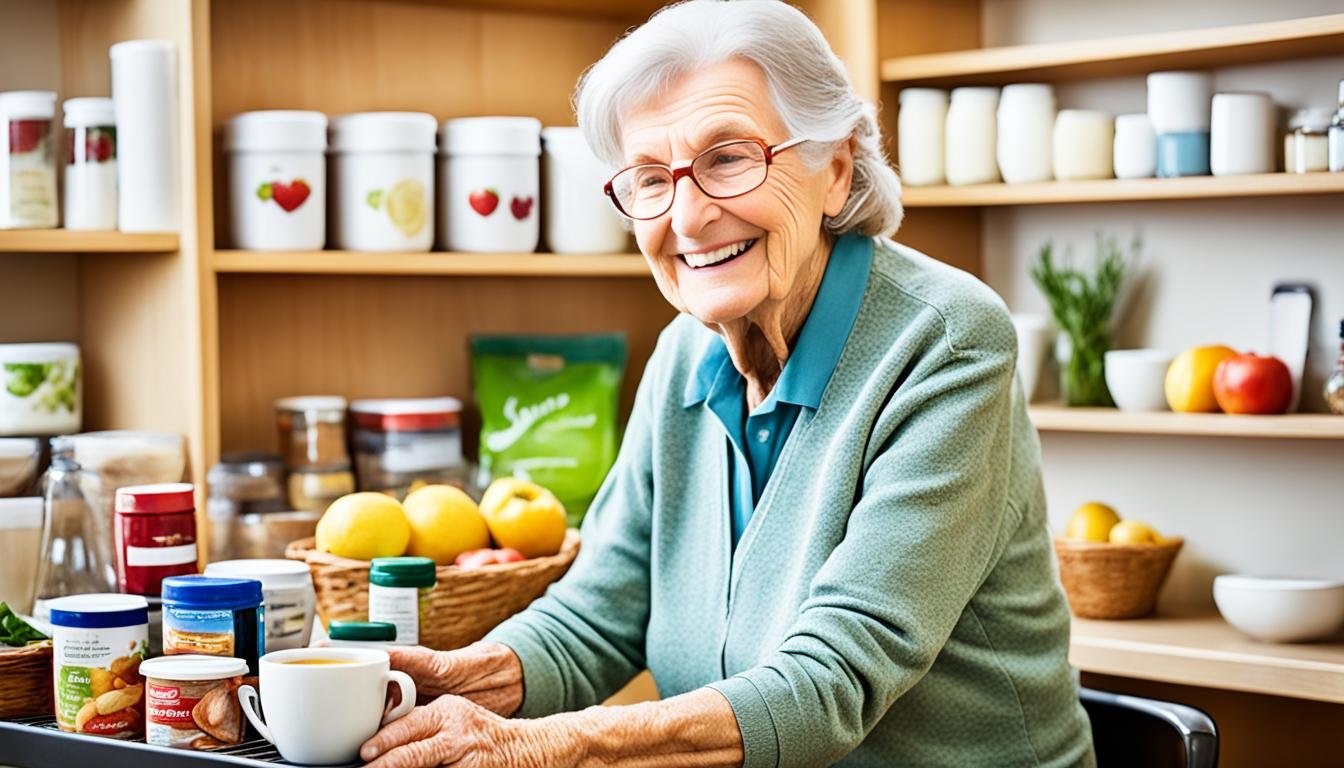Acts of service is one of the love languages, focusing on helping and supporting others in tangible ways. It involves easing their responsibilities and burdens, making them feel cared for and loved. This is particularly important for the elderly and disabled, who may have limited mobility or need assistance with daily tasks. Acts of service can include simple gestures like picking up their favorite snacks, helping with household chores, or running errands for them. These actions show that you are there for them and willing to go the extra mile to make their lives easier.
By showing acts of service to someone who is elderly or disabled, you can make a significant difference in their daily lives. It’s about providing support, care, and assistance to enhance their well-being. Not only do these acts help alleviate their burdens, but they also show that you value and appreciate them. Whether it’s a small act or a more significant gesture, acts of service demonstrate your commitment to their happiness and comfort.
Table of Contents
ToggleExamples of Acts of Service for Elderly and Disabled Individuals
When it comes to supporting elderly and disabled individuals, acts of service can make a world of difference in their lives. These kind gestures not only demonstrate your love and care but also help ease their daily challenges and improve their overall well-being. Here are some of the best ways to show acts of service for the elderly and disabled:
1. Picking up groceries
Offering to pick up groceries for an elderly or disabled person can greatly alleviate their stress and physical exertion. Simply ask for their shopping list and preferences, and ensure that you choose items that meet their specific needs.
2. Cooking meals for them
Preparing nutritious and delicious meals for the elderly and disabled can ensure they receive proper nutrition and enjoy a variety of flavors. Consider their dietary restrictions and preferences, and offer to cook meals at their home or deliver them if feasible.
3. Assisting with personal care tasks
Help with personal care tasks like bathing, grooming, or getting dressed can be immensely beneficial for those who have limited mobility. Approach these tasks with sensitivity, respect, and a focus on maintaining their dignity throughout the process.
4. Providing transportation to appointments
Transportation can be a major hurdle for the elderly and disabled, preventing them from attending important appointments or social outings. Offering to drive them to their destinations, whether it’s a medical appointment or a social event, can be a valuable service.
5. Assisting with household chores
Doing household chores such as cleaning, laundry, or organizing can be physically demanding for elderly and disabled individuals. Offering to help with these tasks not only lightens their workload but also creates a clean and comfortable environment for them.
6. Listening and spending quality time
Showing love and kindness to the elderly and disabled can also be as simple as lending an ear and spending quality time with them. Listening to their stories, engaging in conversations, or participating in activities they enjoy can make them feel valued and loved.
7. Sending thoughtful gifts
Sending thoughtful gifts that cater to their interests or needs can brighten their day and show that you’re thinking of them. Whether it’s a book, puzzle, or a personalized item, these gifts demonstrate your care and provide them with moments of joy.
Remember, acts of service for the elderly and disabled should always be tailored to their specific needs, preferences, and comfort levels. Every individual is unique, so it’s important to communicate openly, respect their autonomy, and adapt your acts of service accordingly.

Effective Communication Tips for Supporting Elderly and Disabled Individuals
Effective communication is crucial when providing support to elderly and disabled individuals. By utilizing appropriate communication techniques, you can enhance the patient-provider relationship and ensure that important information is conveyed clearly. The following communication tips can help facilitate effective interactions with older patients:
- Treat with respect and dignity: It is essential to treat elderly and disabled individuals with respect, acknowledging their value and worth. Focus on their abilities rather than their disabilities to foster a positive and empowering environment.
- Use clear and simple language: Communication should be straightforward and easy to understand. Avoid using complex terminology, jargon, or medical terms that may confuse or overwhelm the patient. Speak in a calm and reassuring tone to promote understanding.
- Speak directly to them: When communicating with elderly and disabled individuals, address them directly rather than speaking to their caregivers or family members. This helps maintain their dignity and engagement in the conversation.
- Avoid labels and stereotypes: Refrain from using derogatory terms or labels that may stigmatize or demean individuals based on their age or disability. Treat each person as an individual and focus on their unique needs and preferences.
- Practice patience and allow time: Older patients may require additional time to process information, formulate responses, or express their thoughts. Be patient and allow them the necessary time to communicate effectively, avoiding rushing or interrupting them.
- Use written notes or handouts: Providing written information or visual aids can be helpful for elderly and disabled individuals who have difficulty hearing or comprehending verbal instructions. Written materials enable them to review information at their own pace and serve as a useful reference.
- Consider hearing and visual impairments: Older patients may have varying degrees of hearing or visual impairments. Ensure adequate lighting, minimize background noises, and speak clearly and at an appropriate volume. If necessary, consider using assistive devices such as hearing aids or magnifiers.
By implementing these communication tips, you can promote effective and empathetic interactions with elderly and disabled individuals, enhancing their overall healthcare experience.

Conclusion
Acts of service play a crucial role in supporting the elderly and disabled individuals. By providing tangible help and assistance, we can significantly improve their well-being and make a positive impact on their lives. Whether it’s small acts of kindness or more significant gestures, acts of service show our care and commitment to their happiness and comfort.
Incorporating effective communication is vital when caring for the elderly and disabled. Treating them with respect and dignity, using clear and simple language, and considering their specific needs can enhance the connection and strengthen the relationship. Taking the time to listen, understand, and accommodate any impairments they may have will make a significant difference in their experience.
Supporting and caring for the elderly and disabled is not just about completing tasks but about creating meaningful connections. Acts of service, when coupled with genuine empathy and understanding, can improve their quality of life and foster a sense of belonging. By acknowledging their unique challenges and providing the support they require, we can make a meaningful difference for these individuals, showing them that they are valued and cherished.

